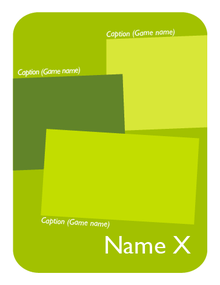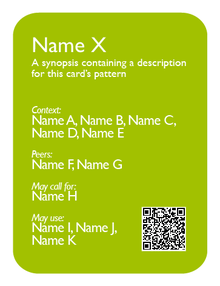Difference between revisions of "Time Twist"
From SoundInGames.com - Sound Design in Games
ValterAlves (Talk | contribs) m |
ValterAlves (Talk | contribs) m |
||
| Line 7: | Line 7: | ||
| patternpresentation = | | patternpresentation = | ||
| cardpresentation= | | cardpresentation= | ||
| − | | -frontface =TimeTwist-front- | + | | -frontface =TimeTwist-front-v20.png |
| − | | -backface =TimeTwist-back- | + | | -backface =TimeTwist-back-v20.png |
| screenshots= | | screenshots= | ||
| rel-tag1=Contexts:<br> | | rel-tag1=Contexts:<br> | ||
Revision as of 19:06, 13 November 2011

|

| |
| The card's front face | The card's back face |
Candidate Card (new in version 2.0)
Contents
Synopsis
| Using sound to enhance the perception of time manipulations. |
Relationships
Contexts:
Gameplay File:M385px-Gameplay-front-v20.png, Awareness ![]() .
.
Description
Games that include manipulations of time as part of their gameplay, often use sound to enhance the perception of such actions. Solutions tipically follow the cinematic tradition. The most common cases are reversing, fast forwarding and slow motion.
Examples




